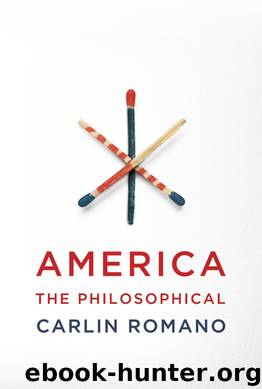America the Philosophical by Carlin Romano

Author:Carlin Romano [Romano, Carlin]
Language: eng
Format: epub
ISBN: 978-0-307-95821-1
Publisher: Knopf Doubleday Publishing Group
Published: 2012-05-21T16:00:00+00:00
Philadelphia-born philosopher Alain Locke (1886–1954) came to be designated the Renaissance’s chief ideologist. (He preferred the word “midwife.”) His groundbreaking anthology, The New Negro (1925), articulated how African American art would provide the vehicle by which “race proud” yet patriotic blacks assimilated into mainstream American life. Still, that very aim proved controversial, criticized as too deferential to white America’s desire for black exoticism, primitivism and obeisance. Du Bois complained that too much Harlem Renaissance literature was “written for the benefit of white people.” Harold Cruse criticized the “cultural paternalism” of the Harlem Renaissance in his trenchant book The Crisis of the Negro Intellectual. David Levering Lewis’s later volume on the Renaissance offered the acerbic title When Harlem Was in Vogue.
Debates about the pros and cons of Locke’s role continue today. As critics and scholars such as Nathan Huggins and Lewis helped us recognize, the Harlem Renaissance’s genius rested not in its coherence, but in the panoply of possibilities it presented for black life and art. It comprised Langston Hughes’s resistance to sublimating black art to black politics, Du Bois’s encouragement of it and the determination of a writer like Zora Neale Hurston to pursue her own projects, such as the recovery of folk culture for fiction.
The great service of Hutchinson’s comprehensive study was its willingness to acknowledge the many inconsistent philosophical and institutional influences on those who brought the Renaissance to life: all the “pragmatist philosophers, Boasian anthropologists, socialist theorists, and new journalists” in the background. Chairman of the American Studies Program at the University of Tennessee at Knoxville, Hutchinson went back to the journals and books that the players were reading at the time, producing a landmark—the most multi-shaded portrait of the period’s cultural politics that we’ve had. In contrast to experts on the period who turned sardonic or hostile toward its key white figures—from writer and photographer Carl Van Vechten to anthropologist Franz Boas—Hutchinson sized them up squarely, outlining and explaining their contributions. That served his chief purpose of challenging “assumed oppositions between American and African American cultural nationalisms.” Hutchinson’s strategy to downplay racial issues in turn heightened the focus on the illuminating modernist matrix from which the Renaissance emerged. Even more welcome was his refusal to be scared off by the multilayered “interracial dynamics” that produced his book’s too often caricatured subject. As a result, Hutchinson succeeded in showing that “the Harlem Renaissance writers were less concerned with proving their humanity than with demonstrating their Americanness, in the process challenging their white kinfolk to remake themselves and their concepts of America.” By explicating a wide range of the pragmatist literature, criticism and art that propelled the Renaissance, he rendered that overarching interpretation more credible.
“The Harlem Renaissance program of using the arts to advance freedom and equality,” Hutchinson wrote, “derived not from a desire to prove that blacks could reason and write, as has often been charged, but from a belief in the central role of aesthetic experience in the achievement of new forms of solidarity and understanding.… The Harlem Renaissance was in fact a striking experiment in cultural pluralism.
Download
This site does not store any files on its server. We only index and link to content provided by other sites. Please contact the content providers to delete copyright contents if any and email us, we'll remove relevant links or contents immediately.
| Books & Reading | Comparative Literature |
| Criticism & Theory | Genres & Styles |
| Movements & Periods | Reference |
| Regional & Cultural | Women Authors |
4 3 2 1: A Novel by Paul Auster(12329)
The handmaid's tale by Margaret Atwood(7705)
Giovanni's Room by James Baldwin(7250)
Asking the Right Questions: A Guide to Critical Thinking by M. Neil Browne & Stuart M. Keeley(5706)
Big Magic: Creative Living Beyond Fear by Elizabeth Gilbert(5675)
Ego Is the Enemy by Ryan Holiday(5345)
The Body: A Guide for Occupants by Bill Bryson(5027)
On Writing A Memoir of the Craft by Stephen King(4891)
Ken Follett - World without end by Ken Follett(4682)
Adulting by Kelly Williams Brown(4530)
Bluets by Maggie Nelson(4510)
Eat That Frog! by Brian Tracy(4480)
Guilty Pleasures by Laurell K Hamilton(4392)
The Poetry of Pablo Neruda by Pablo Neruda(4063)
Alive: The Story of the Andes Survivors by Piers Paul Read(3995)
White Noise - A Novel by Don DeLillo(3980)
Fingerprints of the Gods by Graham Hancock(3964)
The Book of Joy by Dalai Lama(3943)
The Bookshop by Penelope Fitzgerald(3810)
